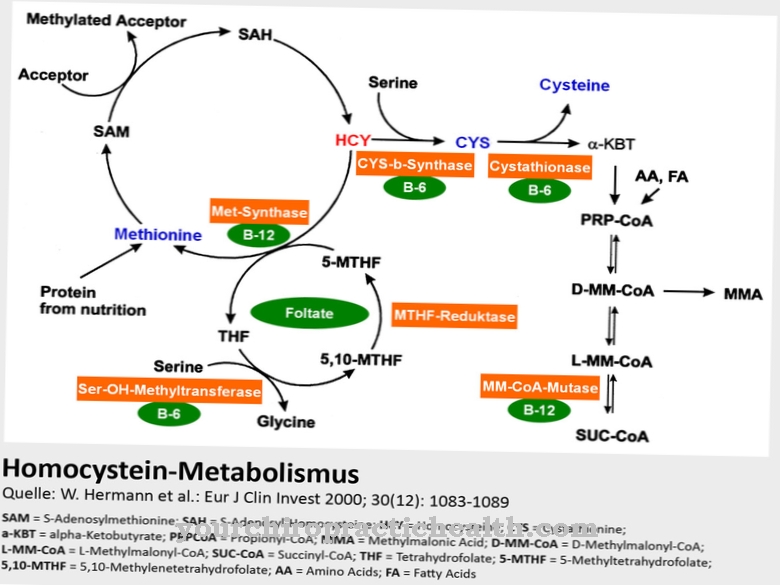It has a penetrating smell of vomit, and criminal figures use its stench and caustic effect to attack. However, within our digestive system, the Butyric acid an important function, and it is also a valuable raw material for medicine and chemistry.
What is butyric acid?
The name butyric acid is the trivial name for Butanoic acid. It belongs to the monocarboxylic acids and is the simplest fatty acid of all. Its chemical formula is C4H8O2, so its molecules are made up of four carbon, eight hydrogen and two oxygen atoms. The liquid, which is colorless at room temperature and somewhat oily, is water-soluble and has a strong irritant effect on the mucous membranes.
Their penetrating rancid smell is perceived by humans and animals even in the smallest concentrations. We perceive it as a sign of putrefaction and therefore negative. In nature, butyric acid is formed from the microbial breakdown of organic substances through so-called butyric acid fermentation. At minus 5 degrees Celsius, its melting point is lower than that of water, and its boiling point is 163 degrees Celsius. In chemistry, salts and esters of butanoic acid are referred to as butyrates or butanoates.
Function, effect & tasks
No healthy intestinal mucosa without butyric acid - this heading summarizes the various mechanisms of action in which the irritating fluid is involved in the human organism.
The uppermost cell layer on the inside of our intestines, the so-called intestinal epithelium, is responsible for the processes of mucus secretion and the absorption of nutrients from the intestine. Butyric acid and its derivatives are the main sources of energy for this so important intestinal epithelium. The metabolism of the intestinal mucosa can only function optimally if its level in the intestinal environment is sufficiently high. Butyric acid stimulates bowel movement, protects the bowel and promotes cell growth, but above all the growth of blood vessels in the intestinal wall.
In addition, it strengthens the connection between the individual cells in the intestinal wall, thereby preventing the intestinal flora from penetrating the epithelium and thus counteracting the development of inflammatory processes. A theory that the acid should even protect against colon cancer is currently being supported by more and more studies.
Education, occurrence, properties & optimal values
Within the human organism, butyric acid is produced in the intestinal flora, more precisely in the large intestine. Prebiotic carbohydrates, which our stomach cannot digest with its digestive enzymes, get here undigested and are processed by intestinal bacteria (including Faecalibacterium prausnitzii).
This process corresponds to the butyric acid fermentation already mentioned, and this is where butyric acid is created. If it is available in sufficient quantities, the pH value in the intestine shifts to the acidic range. Salmonella and other pathogens have a hard time surviving in this environment, and it is easier for our intestines to stay healthy. If the acid has a positive effect here, it is more negative elsewhere: It occurs in the oral mucosa and in human body sweat and is jointly responsible for the unpleasant odor in both places.
When combating moles, voles and other garden pests, gardeners and farmers make use of exactly this property: the animals also don't like the stench and flee. Conversely, it is the typical smell of butyric acid that ticks and other insects benefit from: it is through it they localize their potential "victims".
By the way, butanoic acid and its (much more pleasant smelling) esters are used in the manufacture of medicines, skin care cosmetics, fragrances and liqueurs. Certain compounds of the acid are required for the production of cellulose butyrate, a particularly weather-resistant and impact-resistant plastic.
You can find your medication here
➔ Medication for diarrheaDiseases & Disorders
If the butyric acid level drops in our intestines, the intestinal mucosa can change pathologically. The risk of developing colon cancer or inflammatory bowel diseases such as Crohn's disease increases.
In patients who already suffer from such diseases, a sometimes significantly reduced proportion of butyric acid was found in the intestinal flora. Our diet has a significant impact on how much butanoic acid is produced in our intestines. In particular, foods rich in fiber and those that contain a lot of starch favor their production and can counteract a drop in the level.
As important as butyric acid is for our organism where it belongs, it can become dangerous if we come into contact with it from outside. Serious health problems can arise here. The greatest danger is when inhaling the acid or through skin contact, because even the smallest amounts of it have a strong corrosive effect. Long-term inhalation of their vapors in higher concentrations can irritate the respiratory tract so severely that it can lead to nausea, vomiting, headaches, dizziness and even fainting. Violent, dry cough can be a consequence as well as damage to the bronchi and lung tissue.
If you are exposed to the vapors unprotected for a longer period of time, you can even develop pulmonary edema. Skin contact with butyric acid often leads to moderate irritation, similar to an allergic skin reaction. The gases escaping from the acid also irritate the eyes, which cause them to sting and water. In spite of all of this, butyric acid is not classified as acutely toxic according to the current Ordinance on Hazardous Substances. Due to its extremely unpleasant smell, you will notice it in a concentration that has no toxicological relevance, and you can avoid it in good time. The neutralization of butyric acid is difficult and belongs in the hands of experts.
























.jpg)



